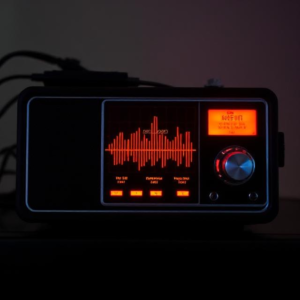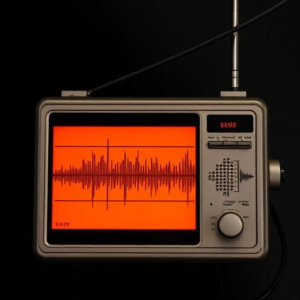Digital Modulation Techniques is a way to send digital data (like computer files or voice messages) over analog communication channels (like radio waves, telephone lines, or Wi-Fi) by changing a signal in specific ways.
What is Modulation?
- Modulation is the process of modifying a carrier signal (usually a high-frequency signal, like a radio wave) to transmit information. In the case of digital modulation, this involves modifying the carrier signal to represent digital data (1s and 0s).
Digital modulation is important because it allows digital data to be transmitted over analog mediums, like radio waves or telephone wires, which are originally designed for analog signals (like sound or music).

1. Types of Digital Modulation Techniques:
There are several ways to modulate a signal to send digital data, and each technique modifies the carrier signal in a different way. Let’s look at the most common ones:
1.1. Amplitude Shift Keying (ASK):
- What is it? In ASK, the amplitude (strength or height) of the carrier signal is changed to represent the digital data. This means the carrier signal is either turned on or off (representing binary “1” or “0”) or changed in strength to represent different levels of data.
- How it works:
- Binary ASK (BASK): If you send a “1”, the carrier signal might have a high amplitude (stronger signal), and if you send a “0”, the carrier might have zero amplitude (no signal).
- Example: Think of turning on a flashlight (strong light for “1”) or turning it off (no light for “0”).
- Why it’s used: ASK is simple and easy to implement but is sensitive to noise (weak or distorted signals), which can cause errors.
1.2. Frequency Shift Keying (FSK):
- What is it? In FSK, the frequency (how fast the carrier signal oscillates) is changed to represent the digital data. The carrier signal will shift between two different frequencies to represent “1” and “0”.
- How it works:
- Binary FSK (BFSK): If you send a “1”, the carrier might oscillate at one frequency (say, 1000 Hz), and for “0”, it might change to another frequency (say, 2000 Hz).
- Example: Think of two different musical notes: one representing “1” and the other representing “0”. The switch between the notes sends the digital data.
- Why it’s used: FSK is more robust than ASK because it’s less affected by signal strength but still gets affected by noise.
1.3. Phase Shift Keying (PSK):
- What is it? In PSK, the phase (the position or timing of the carrier wave) is shifted to represent the digital data. The carrier wave is unchanged in frequency or amplitude but is altered in timing.
- How it works:
- Binary PSK (BPSK): The phase of the signal is shifted by 180 degrees to represent “1” and “0”. For example, a “1” might correspond to a wave that starts at 0 degrees, and a “0” could correspond to a wave that starts at 180 degrees.
- Higher-order PSK (QPSK, 8PSK, etc.): These techniques use multiple phase shifts to represent more than just two values (not just “1” and “0”). For example, QPSK uses 4 different phase shifts to represent two bits of data at once.
- Example: Imagine the position of a swinging pendulum. If it swings in one direction (representing “1”) or the opposite direction (representing “0”), that’s the basic idea of phase shift.
- Why it’s used: PSK is highly efficient and works well even in noisy environments, making it one of the most commonly used modulation techniques for digital communication.
1.4. Quadrature Amplitude Modulation (QAM):
- What is it? QAM combines both amplitude and phase modulation. It uses changes in both the amplitude and the phase of the carrier signal to represent digital data. QAM allows more data to be transmitted at once by using different combinations of amplitude and phase.
- How it works:
- 16-QAM: In 16-QAM, there are 16 different combinations of amplitude and phase, so it can represent 4 bits of data at once.
- Higher-order QAM (like 64-QAM): Uses even more combinations, allowing even more data to be transmitted in a smaller amount of time.
- Example: Think of a grid where each point represents a combination of amplitude and phase, and different points represent different bits of data.
- Why it’s used: QAM allows the transmission of more data in the same bandwidth, making it very efficient. It’s widely used in systems like cable TV and internet communication.
2. Why Digital Modulation?
- More efficient: Digital signals can carry more data in a smaller bandwidth.
- Better noise resistance: Digital modulation techniques, especially PSK and QAM, are better at resisting noise and interference than analog signals.
- Error correction: Digital data can be more easily checked for errors, and errors can be corrected using techniques like parity checks or redundancy.
3. Summary of Key Digital Modulation Techniques:
- ASK (Amplitude Shift Keying): Changes the signal’s amplitude to represent data.
- Simple but sensitive to noise.
- FSK (Frequency Shift Keying): Changes the signal’s frequency to represent data.
- More robust than ASK but still affected by noise.
- PSK (Phase Shift Keying): Changes the signal’s phase to represent data.
- Very efficient, less affected by noise, widely used.
- QAM (Quadrature Amplitude Modulation): Combines both amplitude and phase changes to represent data.
- Highly efficient and can transmit large amounts of data in a small space, widely used in broadband systems.
Real-Life Examples of Digital Modulation:
- Wi-Fi and Bluetooth: Use QAM and PSK to transmit data over wireless connections.
- Cellular Networks: Use QAM, FSK, and PSK for communication between phones and cell towers.
- Satellite TV: Uses QAM to transmit TV channels efficiently.
- Modems: Early internet modems used ASK and FSK to convert digital data to analog signals for telephone lines.











